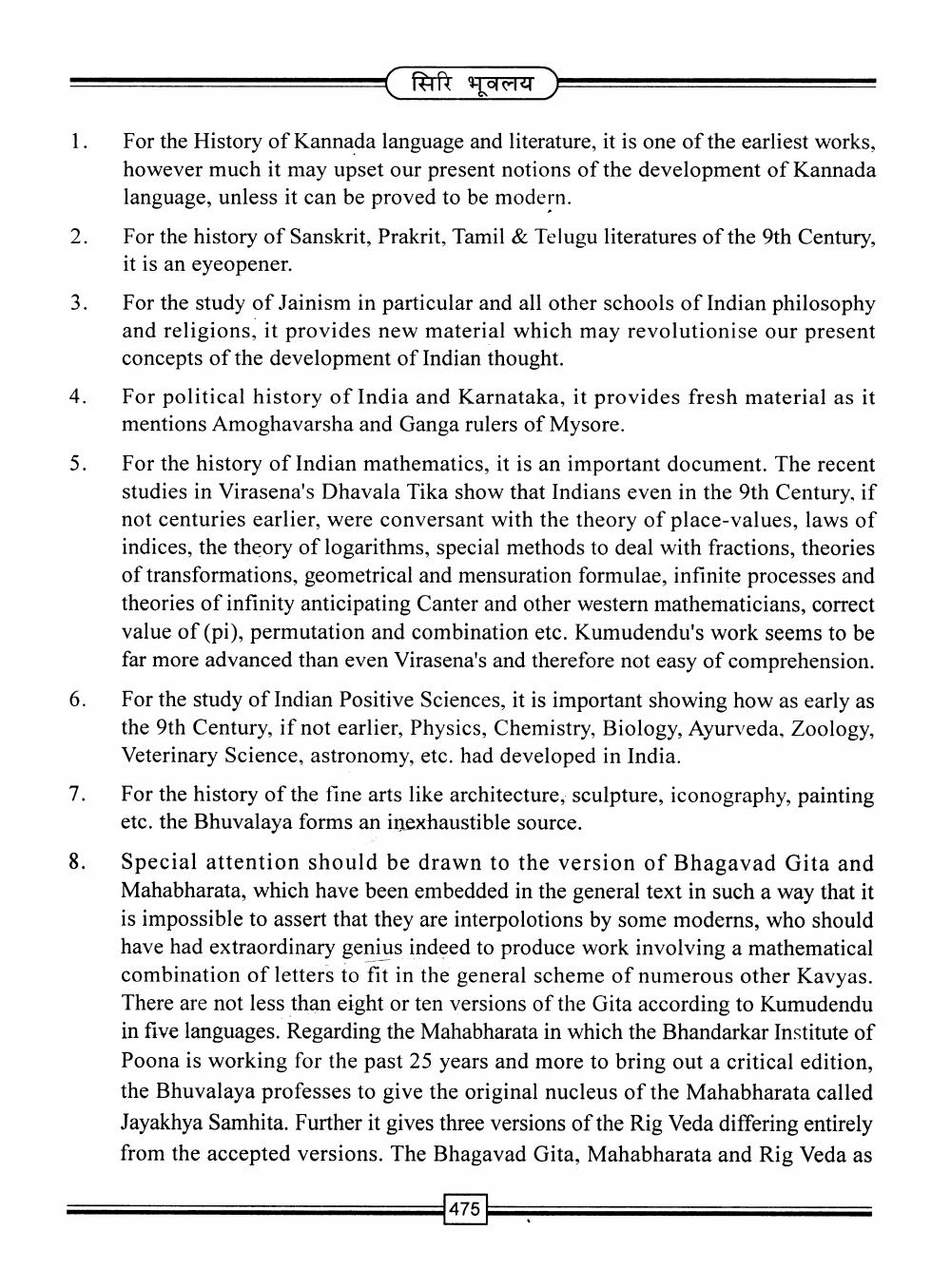________________
1.
2.
3.
4.
5.
6.
7.
8.
सिरि भूवलय
For the History of Kannada language and literature, it is one of the earliest works, however much it may upset our present notions of the development of Kannada language, unless it can be proved to be modern.
For the history of Sanskrit, Prakrit, Tamil & Telugu literatures of the 9th Century, it is an eyeopener.
For the study of Jainism in particular and all other schools of Indian philosophy and religions, it provides new material which may revolutionise our present concepts of the development of Indian thought.
For political history of India and Karnataka, it provides fresh material as it mentions Amoghavarsha and Ganga rulers of Mysore.
For the history of Indian mathematics, it is an important document. The recent studies in Virasena's Dhavala Tika show that Indians even in the 9th Century, if not centuries earlier, were conversant with the theory of place-values, laws of indices, the theory of logarithms, special methods to deal with fractions, theories of transformations, geometrical and mensuration formulae, infinite processes and theories of infinity anticipating Canter and other western mathematicians, correct value of (pi), permutation and combination etc. Kumudendu's work seems to be far more advanced than even Virasena's and therefore not easy of comprehension.
For the study of Indian Positive Sciences, it is important showing how as early as the 9th Century, if not earlier, Physics, Chemistry, Biology, Ayurveda, Zoology, Veterinary Science, astronomy, etc. had developed in India.
For the history of the fine arts like architecture, sculpture, iconography, painting etc. the Bhuvalaya forms an inexhaustible source.
Special attention should be drawn to the version of Bhagavad Gita and Mahabharata, which have been embedded in the general text in such a way that it is impossible to assert that they are interpolotions by some moderns, who should have had extraordinary genius indeed to produce work involving a mathematical combination of letters to fit in the general scheme of numerous other Kavyas. There are not less than eight or ten versions of the Gita according to Kumudendu in five languages. Regarding the Mahabharata in which the Bhandarkar Institute of Poona is working for the past 25 years and more to bring out a critical edition, the Bhuvalaya professes to give the original nucleus of the Mahabharata called Jayakhya Samhita. Further it gives three versions of the Rig Veda differing entirely from the accepted versions. The Bhagavad Gita, Mahabharata and Rig Veda as
475




